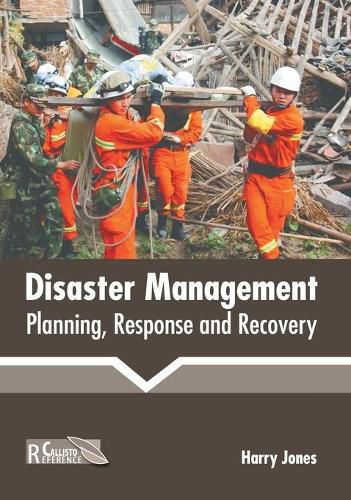Readings Newsletter
Become a Readings Member to make your shopping experience even easier.
Sign in or sign up for free!
You’re not far away from qualifying for FREE standard shipping within Australia
You’ve qualified for FREE standard shipping within Australia
The cart is loading…






This title is printed to order. This book may have been self-published. If so, we cannot guarantee the quality of the content. In the main most books will have gone through the editing process however some may not. We therefore suggest that you be aware of this before ordering this book. If in doubt check either the author or publisher’s details as we are unable to accept any returns unless they are faulty. Please contact us if you have any questions.
The serious disturbances that occur for a short period of time and cause extensive material, economic, human and environmental loss are termed as disasters. Natural and man-made disasters are the two primary types of disasters. The natural phenomena such as volcanic eruptions, earthquakes, tsunamis, tornados and landslides are the natural disasters. Catastrophe such as transport accidents, oil spills and nuclear explosions are the examples of man-made disasters. Disaster management aims to reduce the harmful effects of disasters. The three main areas of disaster management are disaster planning, disaster recovery and disaster response. Disaster planning includes the methods used to prevent disasters from occurring. Disaster response is the ability to deal with the challenges presented by the disaster events. Disaster recovery includes the utilization of technological systems after disaster to return to the former condition. The book studies, analyzes and upholds the pillars of disaster management and its utmost significance in modern times. Most of the topics introduced herein cover new techniques and the applications of disaster management. This book will serve as a reference to a broad spectrum of readers.
$9.00 standard shipping within Australia
FREE standard shipping within Australia for orders over $100.00
Express & International shipping calculated at checkout
This title is printed to order. This book may have been self-published. If so, we cannot guarantee the quality of the content. In the main most books will have gone through the editing process however some may not. We therefore suggest that you be aware of this before ordering this book. If in doubt check either the author or publisher’s details as we are unable to accept any returns unless they are faulty. Please contact us if you have any questions.
The serious disturbances that occur for a short period of time and cause extensive material, economic, human and environmental loss are termed as disasters. Natural and man-made disasters are the two primary types of disasters. The natural phenomena such as volcanic eruptions, earthquakes, tsunamis, tornados and landslides are the natural disasters. Catastrophe such as transport accidents, oil spills and nuclear explosions are the examples of man-made disasters. Disaster management aims to reduce the harmful effects of disasters. The three main areas of disaster management are disaster planning, disaster recovery and disaster response. Disaster planning includes the methods used to prevent disasters from occurring. Disaster response is the ability to deal with the challenges presented by the disaster events. Disaster recovery includes the utilization of technological systems after disaster to return to the former condition. The book studies, analyzes and upholds the pillars of disaster management and its utmost significance in modern times. Most of the topics introduced herein cover new techniques and the applications of disaster management. This book will serve as a reference to a broad spectrum of readers.